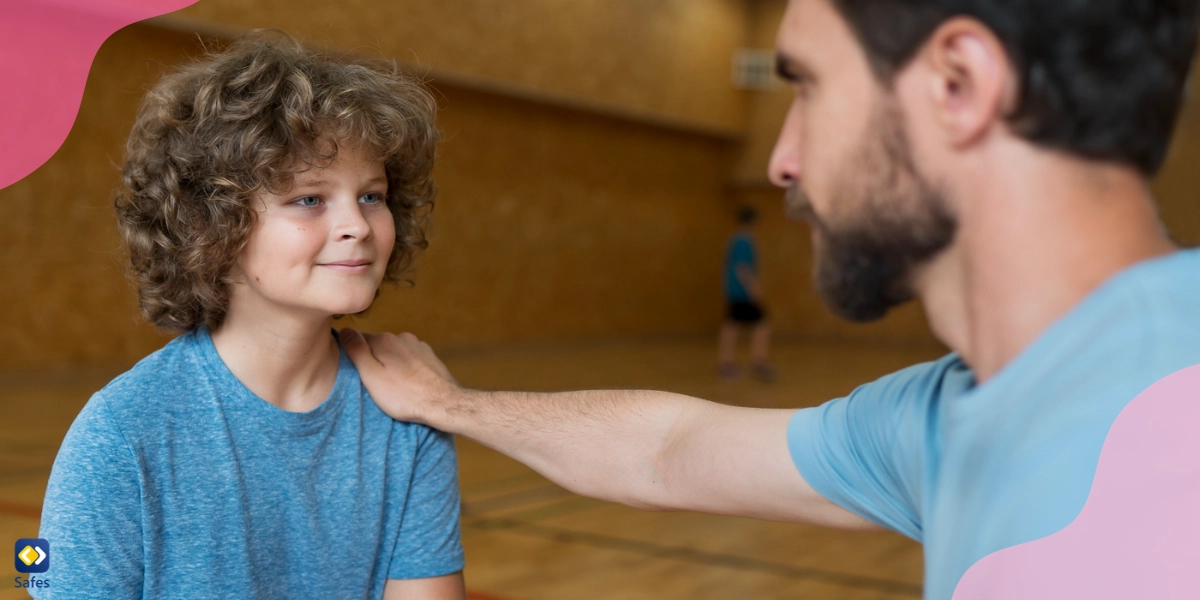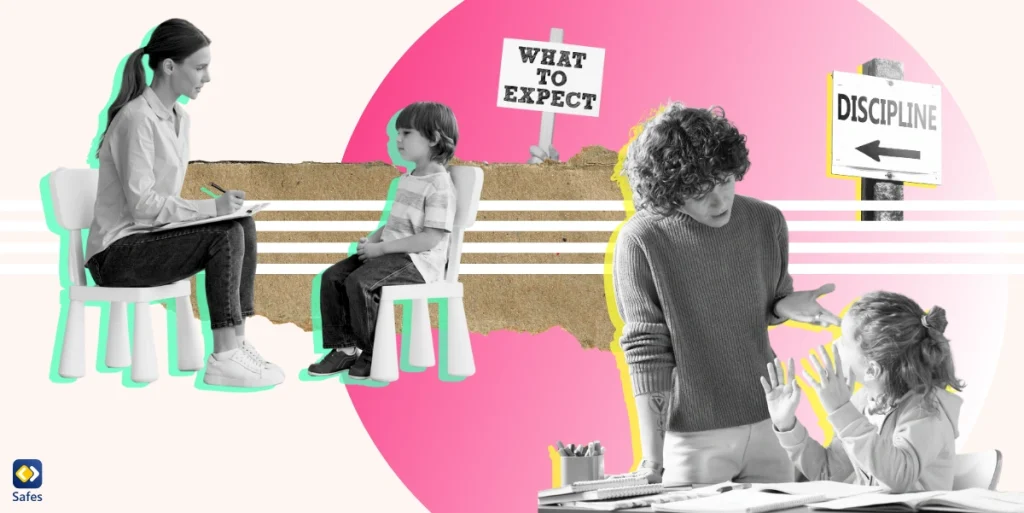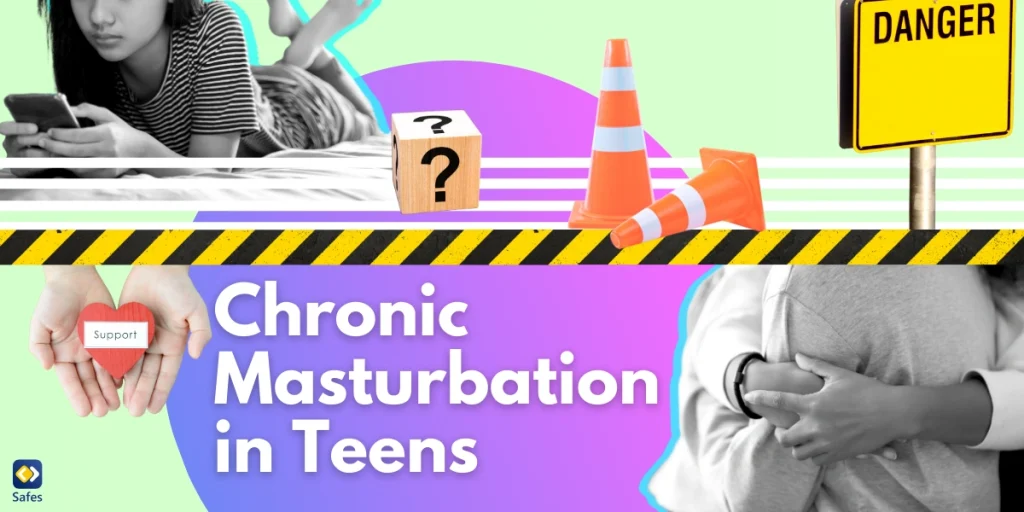In the intricate dance of parenting, there’s a rhythm that many seek but few truly grasp. Amidst the myriad of advice and strategies, a question emerges: “What is positive discipline?” This philosophy, rooted in understanding and collaboration, offers a beacon of hope for those navigating the challenges of child-rearing. With compelling positive discipline examples, we witness the transformative power of this approach. It underscores the importance of transitioning from punitive measures to constructive techniques, fostering not only better behavior but also stronger parent-child bonds.
Download and Start Your Free Trial of the Safes Parental Control App
The Foundations of Positive Discipline Approach
The journey of positive discipline parenting begins with a solid grasp of its philosophy. According to Healthline, this approach steers away from punitive measures, favoring constructive strategies that focus on teaching and guiding. Rooted in principles that prioritize respect and empathy, positive discipline not only corrects behavior but also fosters long-term behavior change. The emphasis is not on punishment but on understanding and collaboration. It’s a way to discipline a child without hitting, using fear, or inducing shame.
Moving forward, the environment in which a child grows plays a pivotal role. Creating a supportive environment, infused with open communication and active listening, is paramount. It’s a space where children feel valued, their voices matter, and their emotions are acknowledged. This nurturing ambiance encourages trust and collaboration between the parent and child. It paves the way for a home where mistakes are viewed as learning opportunities and where there’s a safe space for expressing thoughts, fears, and dreams.
Lastly, clarity is key. While the positive discipline approach emphasizes understanding and compassion, it doesn’t imply a lack of structure. Setting clear expectations, with understandable rules and boundaries, gives children a framework within which they can flourish. And, a pro tip? Involve them in the rule-setting process! For instance, when establishing bedtime routines, collaborate on the specifics. This inclusion not only gives children a sense of ownership and responsibility but also makes them more likely to adhere to these guidelines. In essence, it’s about balancing love with discipline, and guidance with freedom.

Effective Positive Discipline Techniques and Tools
Parenting is a dynamic journey, and each child is unique. To ensure that children grow with a strong foundation, it’s essential to equip parents with a toolkit of positive discipline methods. Let’s delve into some of these techniques that have been proven to nurture resilience, empathy, and respect in children.
Using Positive Reinforcement
At the heart of positive discipline is the belief in the power of encouragement and rewards. Instead of reprimanding children for what they did wrong, focus on acknowledging effort and progress. For instance, offering genuine praise for completing chores can motivate children to be proactive in household responsibilities. This approach fosters self-esteem and a sense of accomplishment.
Redirection and Problem-Solving
Children are naturally curious, and sometimes, this curiosity can lead them astray. Instead of reprimanding them, consider techniques that redirect their energy. Encourage children to think through their actions, by asking open-ended questions. For example, if there’s a conflict with a peer, help them brainstorm ways to resolve it amicably.
Teaching Emotional Regulation
Empowering children to manage their emotions is invaluable. According to Teach.com, teaching emotional regulation to children can have long-lasting positive effects on their mental health and well-being. It can also help them develop healthy relationships with others and succeed academically. Equip them with tools to identify and cope with feelings. For instance, guiding a child through a tantrum, teaching them to label their emotions and find calming strategies, can be transformative.

Natural Consequences
Life is the best teacher, and sometimes, allowing children to experience the outcomes of their actions is the best lesson. Instead of sheltering or rescuing them from every misstep, let them face natural consequences. If a child forgets their lunch, rather than rushing it to school, let them understand the result of their forgetfulness. Such experiences can be pivotal in teaching responsibility and foresight.
Time-In vs. Time-Out
While many of us grew up with the concept of “time-out” as a form of punishment, understanding time-out in the light of positive discipline opens up a whole new perspective. Enter the “time-in” strategy—an alternative where, instead of isolating a child, parents spend quality time with them, addressing the root cause of the behavior. When faced with a tantrum, instead of sending the child to a corner, sit with them, and work through the emotions together.

Consistency and Patience
Perhaps the most crucial tools in a parent’s arsenal are consistency and patience. Children thrive in environments where they know what to expect. Staying consistent with your disciplinary approach, even when it’s tough, sends a clear message. But remember, every child is unique, and while one technique may work wonders with one, it might not be as effective with another. So, patience is vital. Celebrate the small victories, learn from the challenges, and remember that parenting, like all good things, is a journey, not a destination.
Application, Challenges, and Real-World Outcomes: Examples of Positive Discipline in Action
When diving into the world of positive discipline, understanding how to tailor strategies to different age groups is fundamental. Age-appropriate discipline isn’t just a catchphrase; it’s a necessity. For instance, while a toddler might need immediate feedback and simple explanations, teenagers require more in-depth conversations and a greater sense of autonomy. Recognizing the distinct needs and challenges of each developmental stage ensures that positive discipline examples remain relevant and effective.
However, as with any parenting approach, challenges can arise. There are many myths and misconceptions about positive discipline. Some might mistake it for leniency, while others might resist the approach, thinking it’s too “soft.” But, addressing these concerns head-on and debunking myths helps create a more informed and effective parenting strategy.
One doesn’t have to look far for success stories that underscore the power of positive discipline. From personal testimonies to stories shared on platforms like the Positive Discipline blog, the transformative power of this approach is evident. Take, for example, a mother of a 4-year-old boy. Frustrated with constant tantrums and traditional punitive measures that weren’t working, she discovered the wonders of positive discipline. By investing in building a connection, employing positive reinforcement, and consistently showing care, she witnessed a transformation in her child’s behavior. Her story, among many others, underscores how positive discipline strengthens bonds, nurtures trust, and fosters cooperative behaviors in children. It’s more than a method; it’s a philosophy that nurtures the best in both parents and their children.

The Bottom Line
In the beautiful journey of parenting, positive discipline emerges as a guiding light, illuminating a path that fosters understanding, empathy, and lasting behavioral change. But as we navigate this digital age, tools like the Safes parental control app become instrumental in reinforcing these principles. Safes provides a harmonious blend of guidance and freedom, ensuring your child explores the digital realm safely while reinforcing the positive discipline techniques you’ve instilled. It’s not just an app; it’s a partner in your mission to raise resilient, empathetic, and responsible digital natives. Download now for iOS and Android. Remember, it’s about balancing love with discipline, both offline and online. Sign up for a 2-week free trial of Safes and explore features like keyword filtering and screen time management. Let’s make online safety a top priority.
Your Child’s Online Safety Starts Here
Every parent today needs a solution to manage screen time and keep their child safe online.
Without the right tools, digital risks and excessive screen time can impact children's well-being. Safes helps parents set healthy boundaries, monitor activity, and protect kids from online dangers—all with an easy-to-use app.
Take control of your child’s digital world. Learn more about Safes or download the app to start your free trial today!



